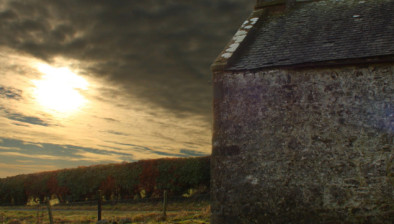Communities feel ‘locked out’ by Scottish landscape policy
 Major new research into Scottish landscape conservation policies has found that communities are being excluded from participating in development decisions that affect the areas they live in.
Major new research into Scottish landscape conservation policies has found that communities are being excluded from participating in development decisions that affect the areas they live in.
This ‘participation deficit’ is in part because of long-standing ‘fence and exclude’ conservation models, which single out ‘special’ landscapes for protection.
And the report’s author has called for a new approach to be adopted by public bodies, alongside “an institutional culture change” to empower local communities to participate in decision-making.
The first research of its kind to be carried out in Scotland, it was conducted by Community Land Scotland and INHERIT, as a response to concerns about the potential for landscape conservation policies to act as a barrier to rural renewal and to efforts to address the depopulation of Scotland’s sparsely-populated areas.
The findings are published in the report, Community Empowerment and Landscape, which identifies a significant gap between the rhetoric and the reality of community participation in decisions about the conservation of Scotland’s landscapes.
Dr Chris Dalglish, a director of INHERIT and the report’s author, said: “Generally speaking, people are excluded when it comes to deciding what matters about Scotland’s landscapes and to making decisions about the conservation of those landscapes. There is an apparent lack of recognition for community voices in this context. The current way of doing things is designed to serve institutional needs.”
Dr Dalglish added: “The effects of the participation deficit are potentially profound. People feel locked out of decisions that affect their lives, and this can undermine people’s confidence, resilience and ability to work for the development of their community and place.”
The research looked at policies dealing with the conservation of the ‘landscape’, ‘historic environment’ and ‘natural heritage’ dimensions of rural places, asking:
Key findings include:
Dr Calum MacLeod, Community Land Scotland’s policy director, added: “Community Empowerment and Landscape marks an important contribution to Community Land Scotland’s ongoing policy work on rural repopulation and renewal. Much of the public policy around the myth of so-called ‘wild’ land has airbrushed the community dimension out of many of Scotland’s rural landscapes.
“The ‘participation gap’ highlighted in the report shows the pressing need to stop marginalising communities when characterising and designating landscapes and instead place them front and centre in that process as a matter of justice.
“It’s time to acknowledge that these landscapes were never ‘wild’ and instead look to ways in which repopulation and environmental sustainability can work together for the economic development of rural Scotland. This report shows ways to do that and Community Land Scotland looks forward to working with communities, Government and others to make that happen in practice.”























